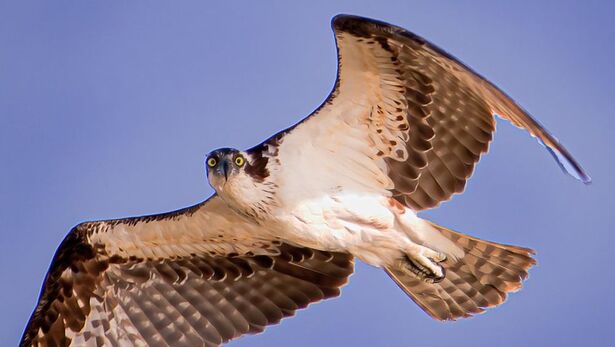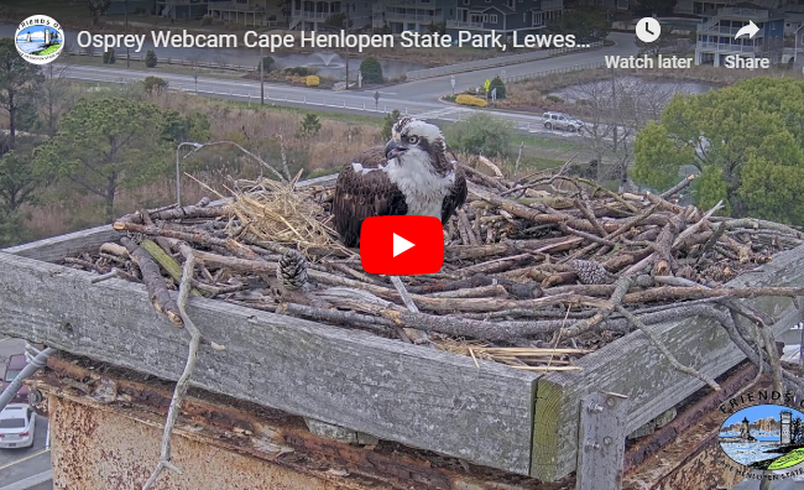Due to structural issues with the tower where our live Osprey cam and nest had resided since 2007, our camera was taken out of service in the Fall of 2022. Since then, FOCHSP working closely with park staff, identified a new location for it late in 2022. A new tower and nesting platform was installed in the spring of 2023, along with the camera and services required at its new home. Sadly , as fans of this page will know, no nesting has occured either during last year or this (2024). We are certainly hoping for a better result next season!
To view: Click/touch the red arrow below.
Click here to learn much more about the Spring Migration of Adult and Juvenile Ospreys
To view: Click/touch the red arrow below.
Click here to learn much more about the Spring Migration of Adult and Juvenile Ospreys
The Osprey Cam Project
Osprey, who reside in Cape Henlopen State Park, migrate each year to South America, they usually return in March to their previous nests, eggs hatch in June, fledge and leave the nest in September. The Friends have lead the way in recognizing these unique creatures.
In 2003 the Park and the Friends started planning for the Osprey Camera – a continuous, real-time feed monitoring the nest of two local ospreys and their offspring. In 2007, with funds from the state, and from fundraising efforts by the Friends this joint project came to fruition with the installation of the camera focused on the Osprey nest, located on the SPI Pharma tower adjacent to the Park entrance. The feed went live in April 2007. Visitors to the Park may view the nest at the Nature center, on YouTube, or from this page.
To view, click on the red button, and instantly see real time beautiful high-resolution video and sound from the nest . For the best experience, try viewing in full screen by clicking on the screen icon at the bottom right, just below the Friends Logo.. To exit full screen just push the [Back] or [ESC] button on your device.
Note there also is a red scroll bar below the video screen which allows you to search for activity over the last twelve hours.
Click here to learn much more about the Spring Migration of Adult and Juvenile Ospreys
In 2003 the Park and the Friends started planning for the Osprey Camera – a continuous, real-time feed monitoring the nest of two local ospreys and their offspring. In 2007, with funds from the state, and from fundraising efforts by the Friends this joint project came to fruition with the installation of the camera focused on the Osprey nest, located on the SPI Pharma tower adjacent to the Park entrance. The feed went live in April 2007. Visitors to the Park may view the nest at the Nature center, on YouTube, or from this page.
To view, click on the red button, and instantly see real time beautiful high-resolution video and sound from the nest . For the best experience, try viewing in full screen by clicking on the screen icon at the bottom right, just below the Friends Logo.. To exit full screen just push the [Back] or [ESC] button on your device.
Note there also is a red scroll bar below the video screen which allows you to search for activity over the last twelve hours.
Click here to learn much more about the Spring Migration of Adult and Juvenile Ospreys


